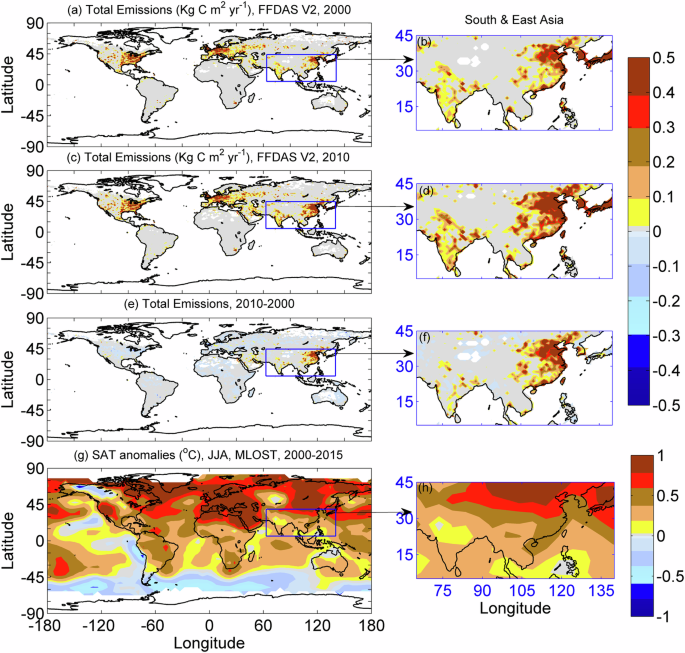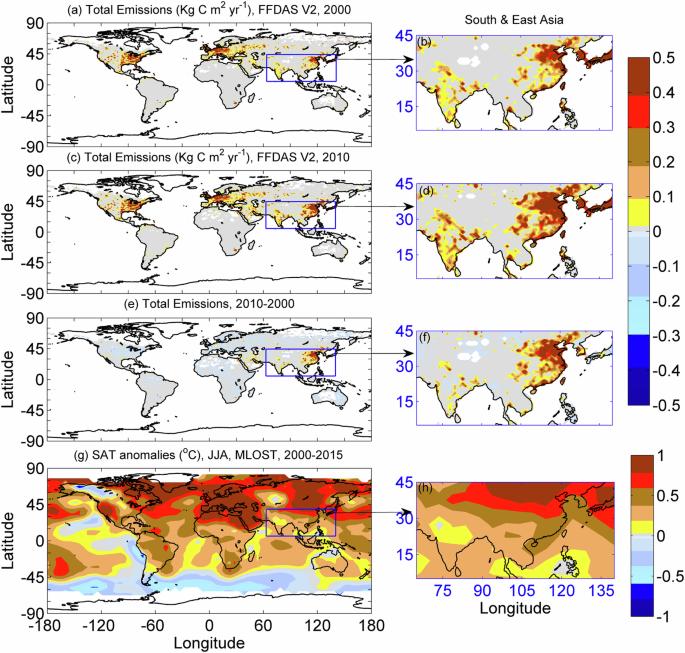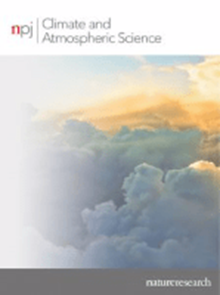Projected changes in extreme hot summer events in Asian monsoon regions
IF 8.5
1区 地球科学
Q1 METEOROLOGY & ATMOSPHERIC SCIENCES
引用次数: 0
Abstract
40% of global population, who resides in Asian monsoon region is at high risk from extreme hot summer events, which is expected to increase by 25%/30 years under RCP8.5 scenario. Using Community Earth System Model (CESM) Large-ensemble simulations we assess the relative contribution of external forcings and internal variability on hot extremes over South and East Asia. Climate change projects surface mean temperature to reach 2.0 °C and 5.0 °C by ~2050 and ~2100, respectively, making the region uninhabitable under exposed conditions. Internal variability will partly obscure anthropogenic warming over South and Southeast Asia; however, East Asia will experience a 4–6 fold rise in record breaking hot events in later periods. Nevertheless, beyond 2.35 °C warming internal variability will decrease over South Asia due to weaker albedo feedback on unforced internal variability. Our results contradict the existing hypothesis that warming will increase volatility in weather patterns everywhere, particularly the Asian monsoon regions.


亚洲季风区夏季极端高温事件的预测变化
全球有 40% 的人口居住在亚洲季风区,他们面临极端炎热夏季事件的高风险,在 RCP8.5 情景下,这种风险预计将增加 25%/30%。利用群落地球系统模式(CESM)大集合模拟,我们评估了外部作用力和内部变率对南亚和东亚极端炎热事件的相对影响。根据气候变化预测,到 2050 年和 2100 年,地表平均温度将分别达到 2.0 ℃ 和 5.0 ℃,使该地区在暴露条件下不适合居住。内部变率将部分掩盖南亚和东南亚的人为变暖;然而,东亚在后期将经历破纪录的高温事件,并将上升 4-6 倍。然而,由于反照率对非强迫性内部变率的反馈作用减弱,南亚变暖超过 2.35 ℃ 后,内部变率将减小。我们的研究结果与现有的假设相矛盾,即气候变暖将增加各地天气模式的不稳定性,尤其是亚洲季风区。
本文章由计算机程序翻译,如有差异,请以英文原文为准。
求助全文
约1分钟内获得全文
求助全文
来源期刊

npj Climate and Atmospheric Science
Earth and Planetary Sciences-Atmospheric Science
CiteScore
8.80
自引率
3.30%
发文量
87
审稿时长
21 weeks
期刊介绍:
npj Climate and Atmospheric Science is an open-access journal encompassing the relevant physical, chemical, and biological aspects of atmospheric and climate science. The journal places particular emphasis on regional studies that unveil new insights into specific localities, including examinations of local atmospheric composition, such as aerosols.
The range of topics covered by the journal includes climate dynamics, climate variability, weather and climate prediction, climate change, ocean dynamics, weather extremes, air pollution, atmospheric chemistry (including aerosols), the hydrological cycle, and atmosphere–ocean and atmosphere–land interactions. The journal welcomes studies employing a diverse array of methods, including numerical and statistical modeling, the development and application of in situ observational techniques, remote sensing, and the development or evaluation of new reanalyses.
 求助内容:
求助内容: 应助结果提醒方式:
应助结果提醒方式:


